GET A QUOTE
Service Location
Customer Ratings
(729)Included for free with this service
Online Booking
Mechanic comes to you
12-month / 12k-mile warranty
Free 50 point safety inspection
Our certified mobile mechanics can come to your home or office 7 days a week between 7 AM and 9 PM.
See availability
Customer Ratings
(729)On average, the cost for a Nissan Pathfinder Spare Tire Installation is $95 with $0 for parts and $95 for labor. Prices may vary depending on your location.
A customer surprised by a flat tire may want a mechanic to come out and replace the damaged tire with the spare tire.
Spare tires in many vehicles are intended only to be used as a temporary solution until a new tire (or set of tires) can be purchased.
Spare tires are a great solution when you find yourself with a flat tire, so you should always keep a spare tire in your vehicle. If you don’t feel comfortable putting the spare tire on, you should call a mechanic to do it for you.
Cars need four tires to operate. Most vehicles come equipped with a spare tire in the trunk, just in case one of your regular tires blows or goes flat. In the event that a tire loses its pressure, you can use the spare tire as an interim tire until you get it replaced. Spare tires may be compact or donut spare tires which are smaller than regular tires, and for safety concerns shouldn’t be driven for long periods of time, but they allow you to get your car mobile again after a flat tire.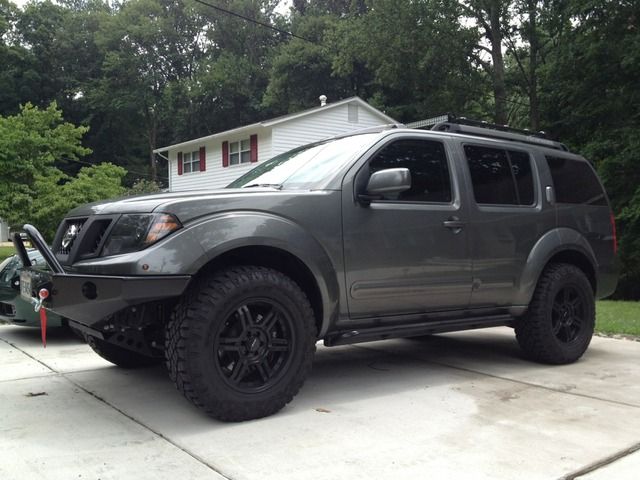 A full-size spare can also be installed which can be used indefinitely until you can have your flat tire repaired or replaced, as long as the spare tire has tread remaining. Spare tires are not meant for use above 55 mph, so you should not drive your vehicle at highway speeds while it’s equipped with a spare tire, either compact or full-size.
A full-size spare can also be installed which can be used indefinitely until you can have your flat tire repaired or replaced, as long as the spare tire has tread remaining. Spare tires are not meant for use above 55 mph, so you should not drive your vehicle at highway speeds while it’s equipped with a spare tire, either compact or full-size.
If your vehicle is equipped with wheel locks, a mechanic will need the wheel lock key to remove the flat tire and install your spare tire. Keep your wheel lock key readily accessible in your vehicle in the event of a flat tire.
Fast and easy service at your home or office
Backed by 12-month, 12.000-mile guarantee
Is It Possible to Repair a Flat Tire?
Your Your tire pressure monitoring light comes on. Before you have a chance to even process what that means, you hear the dreaded flap-flap-flap and your car feels like it has an anchor attached to the back. You limp it...
You limp it...
How to Put a Patch on a Punctured Tire
Getting a flat tire (https://www.yourmechanic.com/article/is-it-safe-to-drive-with-a-flat-tire) can put a damper on your day and your wallet. Tires can go flat due...
Top 10 Bad Car Symptoms You Should Never Ignore
Ignoring car problems costs more than fixing them right away. Never ignore if your car has rough shifting, a shaky steering wheel, or is smoking.
It sounds like you may have been experiencing a misfire. When an engine is misfiring, it can cause the engine to become imbalanced and cause the vibrations that you were experiencing. Another indication of a misfire would be a flashing...
It is possible that your tire pressures may be low and went unnoticed by the technician who last serviced your vehicle. I would recommend having your tire pressures checked (https://www.yourmechanic.com/article/how-do-i-check-my-tire-pressure) because, if they are low, it could potentially cause both...
I would recommend having your tire pressures checked (https://www.yourmechanic.com/article/how-do-i-check-my-tire-pressure) because, if they are low, it could potentially cause both...
Hi, thanks for writing in. The rim has a centering part that will cause it to stick to the hub sometimes after being on the truck for a long time. You will need to remove lug nuts and after making...
Our service team is available 7 days a week, Monday - Friday from 6 AM to 5 PM PST, Saturday - Sunday 7 AM - 4 PM PST.
1 (855) 347-2779 · [email protected]
Read FAQ
GET A QUOTE
by Smart Motorist
If you want to know how to lower spare tire without tool, you’re at the right place. This guide contains everything you need to know to complete the task. The step by step instructions given below doesn’t leave any room for confusion or mistake.
They are also easy to follow and practical. You don’t have to be a mechanic to put them to practice. Anyone who has ever held a tool in their life can use them to get their vehicle back on the road in little to no time. That isn’t where the good news end.
Our experts prepared these directives with the assumption that anyone using them would be on their own.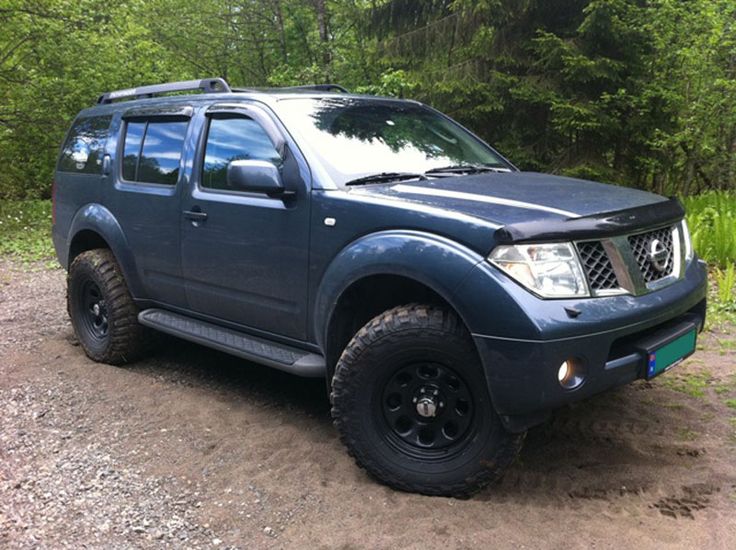 That there might not be anyone assisting them in lowering their spare tire. It’s a good thing if you ask us as it means you can complete the task without any help.
That there might not be anyone assisting them in lowering their spare tire. It’s a good thing if you ask us as it means you can complete the task without any help.
Here’s what you need to do:
Before you go about reading our instructions, it’s important to make sure that you indeed have a spare tire in your vehicle. Most people assume this scenario without ever bothering to verify their assumption by looking at the spare tire. Such persons are often left with nothing at the end.
To verify the presence of the spare tire, discard the rectangular plastic cover under the passenger side of your vehicle’s license plate. If you can see an entrance for a key beneath the plastic cover, then you can be sure that your car does indeed has its spare tire.
That you’re going to lower the spare tire without ‘tool’ doesn’t mean you are going to go about the task with bare hands.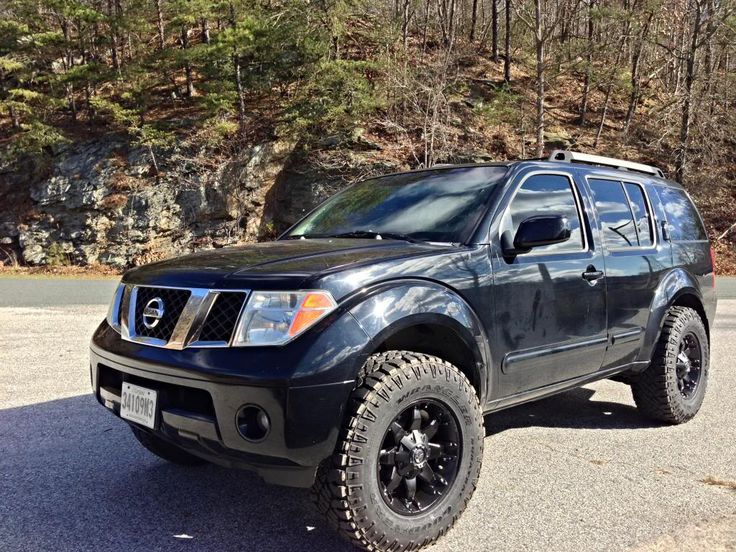 Doing that would be counterproductive. You will still need some supplies to compensate for the lack of the key. Here’s what you’ll need.
Doing that would be counterproductive. You will still need some supplies to compensate for the lack of the key. Here’s what you’ll need.
Purchase a jack kit (without the jack). You can buy one from your local hardware store or Amazon. The next item on your ‘to-get’ list is an ignition key. Alongside the components of the Jack kit, the ignition key will loosen the tire’s connection with the wheel.
Experts tell us that one should never change tires on a slope. The same advice is applicable when you’re lowering a spare tire. Vehicles parked on an incline are extremely likely to go backward, thereby putting the safety of the person under the vehicle at risk.
Once you’ve done that, apply the hand brake. Turn on the emergency lights if you’re on the roadside. Put your vehicle in gear (if manual) or in parking (if automatic). Make sure that no one is sitting inside the car and put chocks or similar heavy objects behind all the wheels.
Follow these instructions to lower spare tire without a tool:
Picture in your mind the exact location of the spare tire. Or you can just fall to your knees and look beneath the vehicle. Fixate your attention to the back of the vehicle. There you’ll see a bulge protruding downwards. That is the spare tire that you’re going to lower.
The exact location of the spare tire will be just behind the tow hitch bar and under the bumper. You can further verify that the bulge is a spare tire by pressing your hand against it. The tire’s trenches will let you know that it’s indeed what you’re looking for.
The tire’s trenches will let you know that it’s indeed what you’re looking for.
Insert the ignition key in the hole beneath the plastic cover you discarded earlier. Drag the key towards you and you’ll end up detaching it from the hole. Doing this is vital as it will allow you to fix the assembly at the rear of your vehicle.
Get the crowbar and a couple of rods. One of the roads will have a wider end. Mechanics usually call this end the ‘female’ end. You’re going to insert this end of the rod into the hole that you disclosed in the previous step with the ignition key.
Doing this will help you in two ways. It will provide you enough space to add the male end of the pulley to the female rod. You will also be left with enough space to remove the bumper.
Look closely to make sure that the fitment between the female end rod and the 2nd rod is perfect. Then put this end through the hole.
Then put this end through the hole.
You have by now one end of the rod into the hole. The other end, which is staying out of the bumper, should now be added to the crowbar. Follow that up by turning the crowbar in an anti-clockwise direction.
This will allow you to swivel the pulley and, by extension, the spare tire to the ground. Keep on rotating as long as the spare tire isn’t entirely on the floor.
This will let you detach the tire from below the vehicle. Keep one hand on the tire and the other on the middle gap of the rim. Apply full force to pull both ends apart and off the peak.
Lowering a spare tire without a tool isn’t exactly straightforward. You have to apply a lot of effort and the whole process will take about an hour for an amateur. Yet it is better than the alternative, which is to wait for hours on the roadside for help.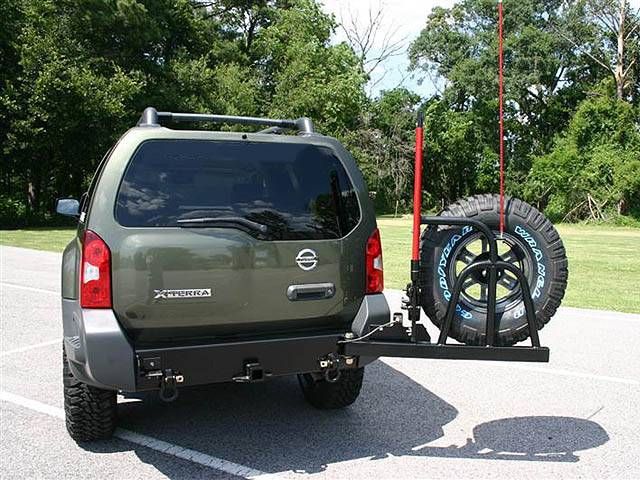 You should therefore be aware of how to accomplish this task.
You should therefore be aware of how to accomplish this task.
We met the third generation of Nissan Pathfinders at the very end of the world, in Portugal, on the coast of the Atlantic Ocean. Having quickly gained popularity in America, Pathfinder set out to conquer Europe once again.
The second generation Nissan Pathfinder, shown in 1996, appeared before a somewhat surprised public in all its glory of the "monoframe" design - with a frame welded to the body. This time around, Nissan has gone even further by equipping the next generation of its midsize SUV with fully independent spring suspension. On the other hand, diesel engines have returned to the power range, in combination with which they offer extremely interesting transmissions - a 5-speed automatic and a 6-speed manual. At the same time, a reduction gear remained in the transfer case, and the drive is implemented according to the on-demand principle (“torque on demand”), that is, with automatic connection of the front axle. Most of the functions are handled by electronics, but the new Nissan has not turned into a "robocop" either, leaving the driver in the lead. The car's styling is forward-looking and at the same time based on family traits and finds tested on the magnificent Dunehauk concept. Pathfinder is the perfect image of the 21st century SUV that is equally good on asphalt and off-road, combining price-appropriate comfort and good handling, successfully balancing design complexity and potential survivability in difficult operating conditions, which is likely to be able to attract a wide range of demanding buyers.
Most of the functions are handled by electronics, but the new Nissan has not turned into a "robocop" either, leaving the driver in the lead. The car's styling is forward-looking and at the same time based on family traits and finds tested on the magnificent Dunehauk concept. Pathfinder is the perfect image of the 21st century SUV that is equally good on asphalt and off-road, combining price-appropriate comfort and good handling, successfully balancing design complexity and potential survivability in difficult operating conditions, which is likely to be able to attract a wide range of demanding buyers.
HOME, FAMILY
Actually, we were not able to fully get used to the role of the average Pathfinder owner, because the automakers had not yet guessed to invite not only journalists, but also their families to such events. But the portrait of the buyer is quite transparent and clear even without marketing research. An adventurous soul is hidden in a suit of elegant cut - our hero, as well as his car, has excellent adaptability to the environment. In other words, when he changes from a business suite to a gore-tex windbreaker, no one will say that this style does not suit him. The current Pathfinder is seven-seater, with the second and third rows folded in a variety of ways, freeing up space for cargo up to 2800 mm long or turning into a flat bed that can fit a person meter ninety. With all rows installed in the passenger position, there is room for 190-liter luggage, which is perhaps the best indicator in the class of mid-size SUVs. True, the folding mechanism of the second row turned out to be very difficult to use, which can be removed in a ratio of 35x35x30 percent. It has two handles and a cushion ring. As a result of twitching for everything out of the blue, I achieved that the pillow leaned back, the back folded, and after that the entire seat, including the powerful tubular frame, to which child seats are attached through the IsoFix system, reared up ... But I was pleased with the places for storing travel trifles, including double glove box, large armrest box, pockets and card slots scattered throughout the cabin.
In other words, when he changes from a business suite to a gore-tex windbreaker, no one will say that this style does not suit him. The current Pathfinder is seven-seater, with the second and third rows folded in a variety of ways, freeing up space for cargo up to 2800 mm long or turning into a flat bed that can fit a person meter ninety. With all rows installed in the passenger position, there is room for 190-liter luggage, which is perhaps the best indicator in the class of mid-size SUVs. True, the folding mechanism of the second row turned out to be very difficult to use, which can be removed in a ratio of 35x35x30 percent. It has two handles and a cushion ring. As a result of twitching for everything out of the blue, I achieved that the pillow leaned back, the back folded, and after that the entire seat, including the powerful tubular frame, to which child seats are attached through the IsoFix system, reared up ... But I was pleased with the places for storing travel trifles, including double glove box, large armrest box, pockets and card slots scattered throughout the cabin.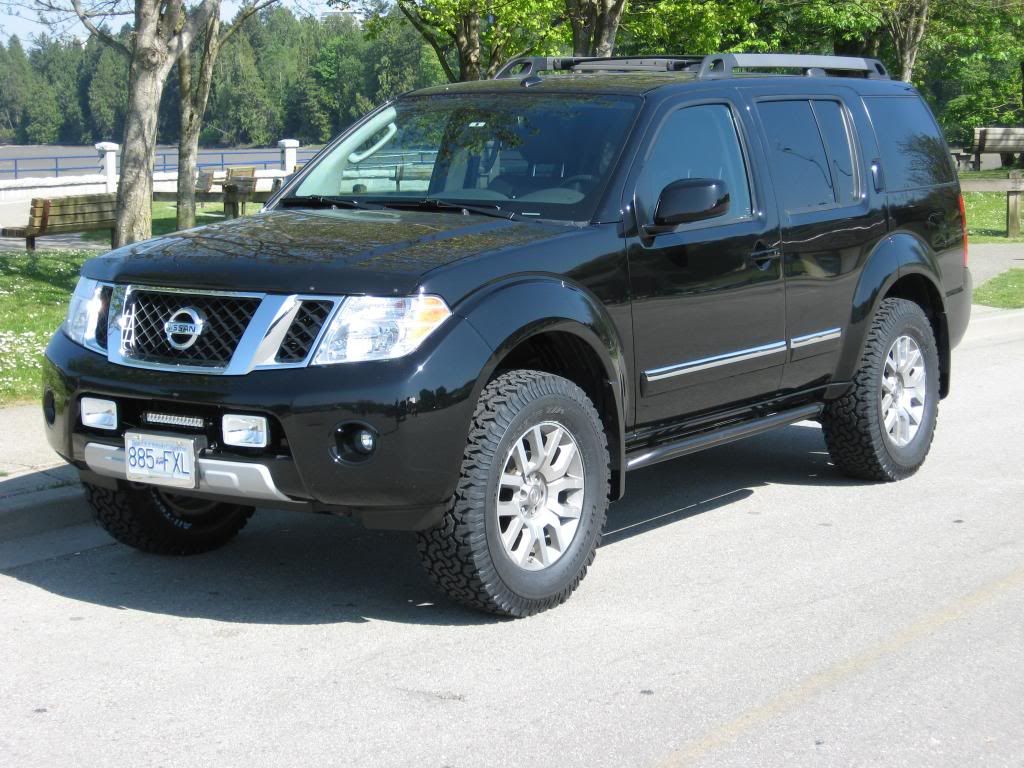 Even under the floor of the trunk, we found a locker suitable for storing items of an automotive-off-road arsenal.
Even under the floor of the trunk, we found a locker suitable for storing items of an automotive-off-road arsenal.
PATROL STYLE
The driver's seat is decided in a "passenger" way with a vertical steering wheel and a low seat with outstretched legs. This is a distinctive feature inherited by the model from Terrano. Now, however, the place has become noticeably larger and the convenience of landing has almost no drawbacks. Almost - because the seat cushion could be longer, and more adjustable for its slope. And so the knees practically hang in the air. But there is enough space for rear row passengers.
The all-new instrument panel is most similar to the Patrol's, but a little more elegant and fresh. The overall solution of the interior echoes the corporate identity that dominates the exterior design. This is a kind of industrialism of the 21st century, combined with moderate Japanese minimalism, with a balance between functionality and form. At the head of the center console in the most expensive versions is a 4-inch screen for the navigation system, on-board computer and audio. By the way, a 6-disc receiver is installed on the Pathfinder, which can read discs recorded in the MP3 standard. Acoustics showed itself from the best side, giving out rich sound over the entire frequency range. Navigation, on the other hand, was supplemented with a very useful function - showing the details of the movement in the form of “real” streets and roads along which the car moves, with houses, signs and signboards as if from a car window. A spectacle from a fantastic action movie! And the navigator can also communicate with the information center via satellite and inform the driver about traffic jams, road repairs and similar obstacles on the way!
By the way, a 6-disc receiver is installed on the Pathfinder, which can read discs recorded in the MP3 standard. Acoustics showed itself from the best side, giving out rich sound over the entire frequency range. Navigation, on the other hand, was supplemented with a very useful function - showing the details of the movement in the form of “real” streets and roads along which the car moves, with houses, signs and signboards as if from a car window. A spectacle from a fantastic action movie! And the navigator can also communicate with the information center via satellite and inform the driver about traffic jams, road repairs and similar obstacles on the way!
DIESEL "AUTOMATIC" NOT FRIEND
The first Pathfinder we tested was equipped with a diesel engine and an automatic transmission. The motor is brand new and has never been mass-produced. When developing this 2.5-liter common rail YD turbodiesel, the designers clearly tried to provide it with the highest possible torque over the widest rev range.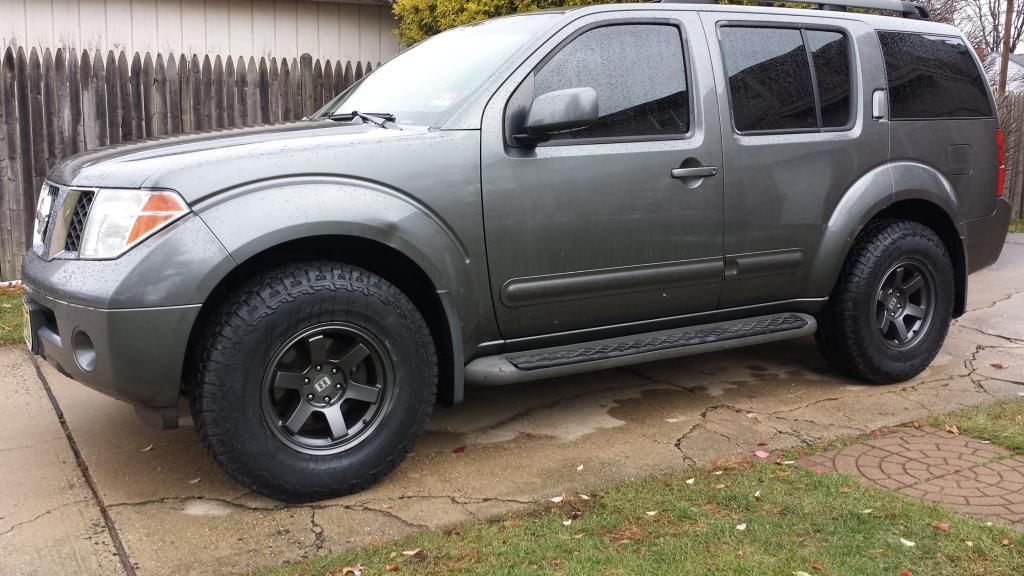 The box, in theory, should help him realize his full potential. In fact, it turned out that the automatic transmission is clearly designed for gasoline, and some excess traction at low revs turns into a lack of power for the diesel engine immediately after 4000 rpm. Later we went to the "mechanics", and the best impressions remained from it. After a blunt in first and sluggish in fifth gear, the automatic transmission proved to be the ideal option for a diesel car. The next day of testing, we were shown a pre-production version of the Pathfinder, equipped with a new gasoline 4.0-liter V6, which will go to the markets of only a few countries, probably ours, for a brief acquaintance. After diesel, this version of "motorization" can be called a hurricane. There is no data on the dynamics of the car yet, but it can easily stay in the tail of the Nissan Z350 roadster at a speed of under two hundred. Acceleration to "hundreds", according to our measurements, is close to 8 - 8.5 seconds.
The box, in theory, should help him realize his full potential. In fact, it turned out that the automatic transmission is clearly designed for gasoline, and some excess traction at low revs turns into a lack of power for the diesel engine immediately after 4000 rpm. Later we went to the "mechanics", and the best impressions remained from it. After a blunt in first and sluggish in fifth gear, the automatic transmission proved to be the ideal option for a diesel car. The next day of testing, we were shown a pre-production version of the Pathfinder, equipped with a new gasoline 4.0-liter V6, which will go to the markets of only a few countries, probably ours, for a brief acquaintance. After diesel, this version of "motorization" can be called a hurricane. There is no data on the dynamics of the car yet, but it can easily stay in the tail of the Nissan Z350 roadster at a speed of under two hundred. Acceleration to "hundreds", according to our measurements, is close to 8 - 8.5 seconds.
The car has excellent aerodynamics.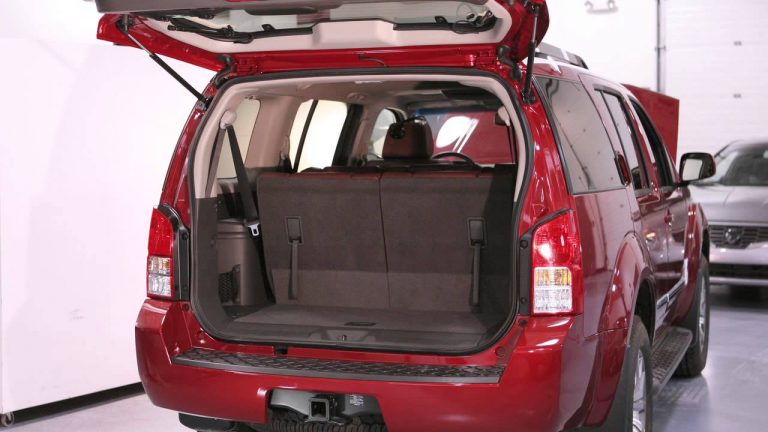 At a speed of 130 km / h, only diesel is heard. There is no wind whistling familiar from other SUVs at all. When we moved into a car with a manual transmission, the roar of the engine did not interfere with talking in an undertone at a speed of 140 km / h! At the same time, the car behaves very, very well. Of course, its steering is “empty” at zero and an extra turn causes a rather violent reaction, but the reaction force is excellent, and the feedback is sufficient for precise control at high speeds. The section with almost mountain serpentine Pathfinder is very stable and predictable. In critical situations, an electronic trajectory retention system and very powerful brakes with a somewhat sluggish, but quite accurate pedal are connected. According to the manufacturer, Pathfinder braking distance is the shortest in the class.
At a speed of 130 km / h, only diesel is heard. There is no wind whistling familiar from other SUVs at all. When we moved into a car with a manual transmission, the roar of the engine did not interfere with talking in an undertone at a speed of 140 km / h! At the same time, the car behaves very, very well. Of course, its steering is “empty” at zero and an extra turn causes a rather violent reaction, but the reaction force is excellent, and the feedback is sufficient for precise control at high speeds. The section with almost mountain serpentine Pathfinder is very stable and predictable. In critical situations, an electronic trajectory retention system and very powerful brakes with a somewhat sluggish, but quite accurate pedal are connected. According to the manufacturer, Pathfinder braking distance is the shortest in the class.
CLUTCH OF JOY
As an off-road part of the test, we were offered two sections: one with rough terrain, the second - sandy. The Pathfinder uses an All Mode 4WD all-wheel drive system, akin to that installed on the X-Trail.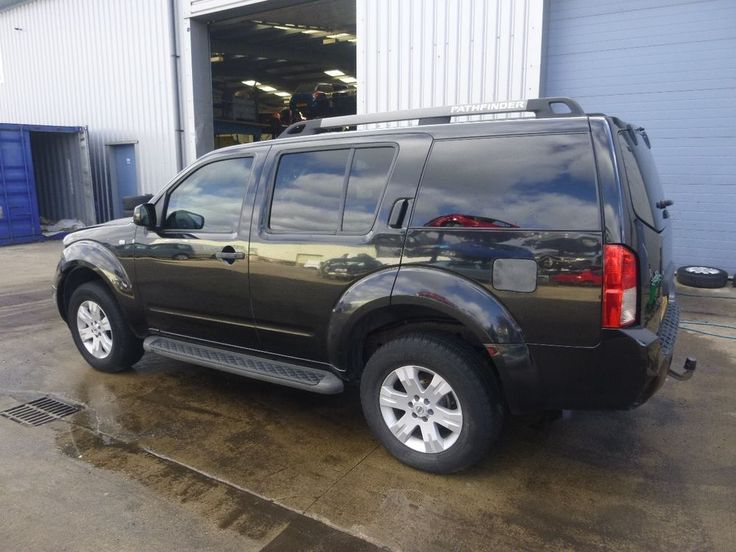 The connection of the front axle in it is controlled by a multi-plate clutch with an electric servo drive, connected via a microprocessor to ABS sensors. That is, with the appearance of a significant difference in the speed of rotation of at least one wheel in relation to the rest, the clutch is activated and Nissan becomes all-wheel drive. Without this, 100% of the moment is transferred to the rear axle. The system is controlled by a handle on the center console.
The connection of the front axle in it is controlled by a multi-plate clutch with an electric servo drive, connected via a microprocessor to ABS sensors. That is, with the appearance of a significant difference in the speed of rotation of at least one wheel in relation to the rest, the clutch is activated and Nissan becomes all-wheel drive. Without this, 100% of the moment is transferred to the rear axle. The system is controlled by a handle on the center console.
The switch has four positions - rear-wheel drive, automatic all-wheel drive, all-wheel drive with a locked differential, and all-wheel drive with a reduction range of the transfer case. With Auto 4WD, the moment is distributed along the axes smoothly, in a ratio from 0:100 to 50:50, depending on the situation. Additionally, the electronic ESP + system is involved in the all-wheel drive movement, which slows down the slipping wheels. When asked about the margin of "strength" and the possibility of overheating of the clutch, one of the Nissan specialists assured that the margin is sufficient, although there are limits, and when the loads are exceeded, the mechanism simply does not allow the transmission to overwork, and the presence of a downshift provides a high level of system performance. In fact, it turned out that when the diagonal hanging is too steep, the car crawls up until there is enough grip on the wheels, or it simply idles the torque converter of the automatic transmission. Manual transmission allows you to push the limit of the Pathfinder, limiting it to the parameters of geometric cross-country ability and tenacity of tires. In our case, the road tires gave up first.
In fact, it turned out that when the diagonal hanging is too steep, the car crawls up until there is enough grip on the wheels, or it simply idles the torque converter of the automatic transmission. Manual transmission allows you to push the limit of the Pathfinder, limiting it to the parameters of geometric cross-country ability and tenacity of tires. In our case, the road tires gave up first.
In principle, an SUV like the Pathfinder is not designed to cross water barriers, so there is no information about the depth of the ford, although the external inspection and inspection of the engine compartment indicate a safe depth of 40 centimeters, no more. At least I did not see the breathers brought under the hood. But what will happen if Pathfinder on a forest road to a picnic gets into a clay puddle or “runs into” a rut, I found out when I broke away from the group and turned into a strange Portuguese forest. Sequoias, cork oaks and an incredible variety of bushes grow there, terribly scraping branches along the Nissan body.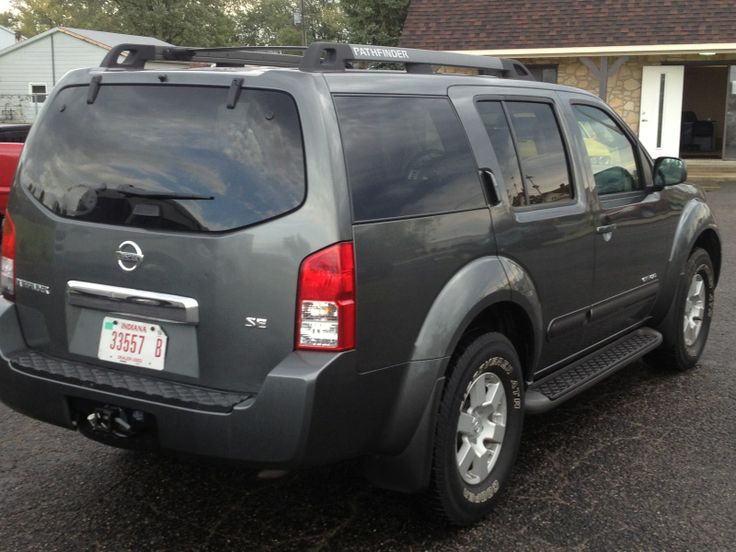 So: when driving into a puddle or a rut, you should be wary of the license plate hanging on the very edge of the front bumper, and driving further away or getting out, follow the spare tire hanging under the rear overhang and mudguards, which, however, are easy to install in place. The car sits on the spare tire without warning, since the independent suspension practically does not inform the pilot about the residual ground clearance, as is the case with rigid axles. Slightly the rear wheels go deeper into a rut or pit, as if someone is grabbing the car by the rear bumper. Here it is important to stop in time and assess the situation so as not to aggravate the situation up to a tight landing. However, drawing an analogy with the Nissan Armada and Infiniti QX56, we can assume that when the luxury version of the Pathfinder under the Infiniti brand is released, air springs will appear in its rear suspension, and this will improve the situation.
So: when driving into a puddle or a rut, you should be wary of the license plate hanging on the very edge of the front bumper, and driving further away or getting out, follow the spare tire hanging under the rear overhang and mudguards, which, however, are easy to install in place. The car sits on the spare tire without warning, since the independent suspension practically does not inform the pilot about the residual ground clearance, as is the case with rigid axles. Slightly the rear wheels go deeper into a rut or pit, as if someone is grabbing the car by the rear bumper. Here it is important to stop in time and assess the situation so as not to aggravate the situation up to a tight landing. However, drawing an analogy with the Nissan Armada and Infiniti QX56, we can assume that when the luxury version of the Pathfinder under the Infiniti brand is released, air springs will appear in its rear suspension, and this will improve the situation.
Large transverse irregularities are passed easily and naturally. The suspension, equipped with anti-roll bars, works perfectly when passing through a series of fast turns like a snake. There were no special rolls and pecks, except that the car did not hold the track on the gravel road very confidently.
The suspension, equipped with anti-roll bars, works perfectly when passing through a series of fast turns like a snake. There were no special rolls and pecks, except that the car did not hold the track on the gravel road very confidently.
THE MARKET WAITS
The Nissan Pathfinder will be on sale in the spring. Priced at under 50,000 euros for the basic package, it will be an extremely dangerous competitor in its segment. Its main competitors are Mitsubishi Pajero, Jeep Cherokee and large Korean SUVs. The rest of the "brothers in arms" - like the Land Cruiser Prado, VW Touareg or Land Rover Discovery - are significantly more expensive. The diesel version with two transmission options will first enter the Russian market, and the gasoline version of the Pathfinder will appear in the fall. In the meantime, our choice is a diesel engine with mechanics. An SUV with this combination of power plant can do a lot in capable hands, forgives mistakes and helps to realize the full potential of the new Nissan, which is looking for its own path.
OFF-ROAD DEGREES
Pathfinder geometry is quite good for an SUV of this class. The angles of entry and exit are 33 and 25 degrees, the angle of longitudinal patency is 24 degrees. The maximum ground clearance is not superfluous at all 254 mm. The suspension proved to be unexpectedly soft on very rough terrain with constant diagonal hangings and a large amplitude of handling over the top points of obstacles. Many independent-suspension SUVs thump frighteningly downhill, shaking the insides of the passengers, but the Pathfinder rolls smoothly, although the overall energy intensity of the suspension seemed more than sufficient.
Comments on photographic materials
Photo 2. This is the front panel in the most expensive configuration, with the GPS navigator
Text: Igor Gubar
Photo by the author
We met the third generation of Nissan Pathfinders at the end of the world - in Portugal, on the coast of the Atlantic Ocean. Soon gaining popularity in America, Pathfinder set out to once again conquer Europe. Soon gaining popularity in America, Pathfinder set out to once again conquer Europe. The second generation Nissan Pathfinder, demonstrated in the second half of the 90s of the XX century, appeared before a couple of surprised public in all its nakedness of the “monoframe” design - with a frame welded to the body. Now, Nissan has gone even further by giving the next generation of its midsize SUV a completely free-sprung suspension. Otherwise, diesel engines have returned to the power range, in combination with which they offer very exciting transmissions - a 5-speed automatic and a 6-speed manual. Along with this , a reduction gear remained in the transfer case, and the drive is implemented according to the on-demand principle (“torque on demand”), in other words, with automatic connection of the front axle. Most of the functions are handled by electronics, but the new Nissan has not turned into a "robocop", leaving the driver's position as a leader. The style of the car is future-oriented and at the same time based on the finds and family traits tested on the beautiful Dunehauk concept. HOME, FAMILY In fact, we could not fully get used to the role of the average owner of Pathfinder, because car manufacturers have not yet thought of inviting not only journalists, but also their families to such events. But the portrait of the client is fully transparent and clear, moreover, without market research. An adventure-hungry soul is hidden in an elegantly cut suit - the domestic brave man, as well as his car, has good adaptability to the environment. In other words, at the time when he changes the business suite for a gore-tex windbreaker, no one will say that this style does not suit him. Today's Pathfinder is seven-seater, with the second and third sequences folding in a wide variety of ways, freeing up space for cargo up to 2800 mm long, or transforming into a flat bed that will fit a person meter ninety tall. PATROL STYLE The driver's seat is solved in a "car" key with a vertically low landing and a standing steering wheel with outstretched legs. A completely new device panel is most similar to the "patrol" one, but the pair is more elegant and fresher. The unspecialized response of the interior echoes the corporate identity that dominates the exterior design. This is some industrialism of the 21st century, combined with moderate Japanese minimalism, with a balance between form and functionality. At the head of the center console in the most expensive assumptions there is a 4-inch screen of the navigation system, on-board computer and audio. By the way, a 6-disc receiver is installed on Pathfinder, that can view discs recorded in the MP3 standard. DIESEL "AUTOMATU" NOT FRIEND The first Pathfinder we tested was equipped with an automatic transmission and diesel transmission . The motor is brand new and has never been mass-produced. In developing this 2.5 liter common rail YD series turbodiesel, the designers obviously tried to provide it with the maximum amount of torque in the widest range of revolutions. The box is supposed to help him realize his full potential. The car has excellent aerodynamics. At a speed of 130 km / h, only diesel is heard. There is no wind whistle, which is usual for the second SUVs. At the time when we moved into a car with a manual transmission, the roar of the engine did not interfere with talking quietly at a speed of 140 km / h! The car along with this behaves very, very well. Obviously, his steering is “empty” at zero and an extra turn causes quite a violent reaction, but the reaction hardening is excellent, and the feedback is sufficient for proper control at high speeds. The section with almost mountain serpentine Pathfinder is very stable and predictable. In critical situations, an electronic trajectory retention system and very remarkable brakes are connected with a pair of sluggish, but fully correct pedal. According to the manufacturer, Pathfinder braking distance is the smallest in the class. EUPHORIA CLUTCH As an off-road part of the test, we were offered two sections: one with rough terrain, the second - sandy. The toggle switch has four positions - rear-wheel drive, involuntary full, full with a locked differential and full with the transfer case downshifting. With Auto 4WD, the moment is distributed along the axles slowly, in a ratio from 0:100 to 50:50, depending on the situation. Additionally, the ESP + electronic system is involved in the all-wheel drive movement, which slows down the slipping wheels. When asked about the possibility of “overheating” and the margin of safety of the clutch, one of the Nissan experts assured that the margin is sufficient, despite the fact that there are limits, and when the loads are exceeded, the mechanism simply does not allow the transmission to overwork, and the presence of a downshift provides a high bar for the operability of the aggregate . In principle, an SUV like the Pathfinder is not recommended for crossing water lines, therefore there is no information about the depth of the ford, despite the fact that the inspection and external examination of the engine compartment indicate a reliable depth of 40 centimeters, no more. At least I did not consider the breathers brought under the hood. But what will happen if Pathfinder on a forest road to a picnic gets into a clay puddle or “runs into” a rut, I determined, breaking away from the group and turning into an unusual Portuguese forest. Sequoias grow in that place, an incredible number and cork oaks of various bushes, terribly scraping branches along the Nissan body. MARKET Pending The Nissan Pathfinder will go on sale this spring. With a price of under 50,000 euros for the basic package, it will become a very formidable rival in its own segment. Mitsubishi Pajero, Jeep Cherokee and huge Korean SUVs are seen as its main rivals. The rest of the "comrades in arms" - like the Land Cruiser Prado, VW Touareg or Land Rover Discovery - are much more expensive. The diesel version with two transmission options will first enter the Russian market, and the gasoline version of the Pathfinder will appear in the autumn. In the meantime, the domestic choice is a diesel engine with mechanics. A Jeep with this combination of powertrain can do a lot in capable hands, forgives inaccuracies and helps to realize the full potential of a new Nissan looking for its own way. |